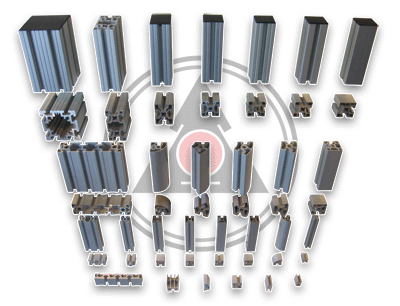Aluminium Profile Systems, including those provided by ENKOSI, are built to provide the manufacturing sector with a range of ever-adaptable framing elements. Without ever drilling a single hole, those squared-off aluminium tubes connect together in hundreds of different shapes. Let’s take stock of our progress. Static system accessories have received coverage in previous posts. Stepping up our efforts, we’re focusing on Aluminium Pneumatic Manifolds today, not stationary framing fasteners.
What Are Aluminium Pneumatic Manifolds?
Make no mistake, stationary APS parts are essential system assets. They’re the “glue” that enables the frame tubes to assume all of those contrasting forms. All the same, there are dynamic assemblies in play, too. They exist to somehow alter the behaviour or function of a moving fixture or group of parts. And by calling an assemblage of profiled elements a “fixture,” those stationary parts are anchored together, but they can still move as a whole-object construct. At any rate, back to the subject at hand, Aluminium Pneumatic manifolds are part of this energy storing group. They attach themselves to profiled aluminium beams and perform as air channelling junctions.
Distributing Workstation Air Streams
Imagine the scene. After walking onto a factory floor, rows of workstations come into view. Coiled hoses drop from ceilings or zip through openings between the desktops. There’s obviously a powerful air compressor locked away, which is sending out a primary stream of pressurised air. A Pneumatic Connection Plate (PCP) is installed in a strategic location. Attached to that specialised accessory, a complete Aluminium Pneumatic Manifold, including its air delivery ports, is functioning as designed. Air comes in on a single tube, then it exits this pneumatic junction box on several different outlets, straight to those yellow-hued workstation hoses. Again, there’s the PCP, which can be machined to meet a customer’s design specs. Accompanying the Pneumatic Connector Plate, there’s also the Pneumatic End Plates (PEP), which yet again are custom-machinable, according to the required number of outlet air delivery ports.
Returning to the infinitely adaptable Aluminium Profile Systems, workstation layouts aren’t the only place that requires air power. Sure, there might be needle-pointed cleaning tools and pneumatic assembly equipment stationed at those workstations, but the air power probably has a more important role to play inside a manufacturing environment. For example, by mounting a pair of Aluminium Pneumatic Manifolds on each and every assembly line, air-driven robots and automated equipment gain instant access to the pressurised fluids that allow them to carry out all sorts of complex movements. The torque-heavy tools attached to those automated arms also require a steady and powerful stream of pressurised air.
For more information, visit our APS page or contact us.


